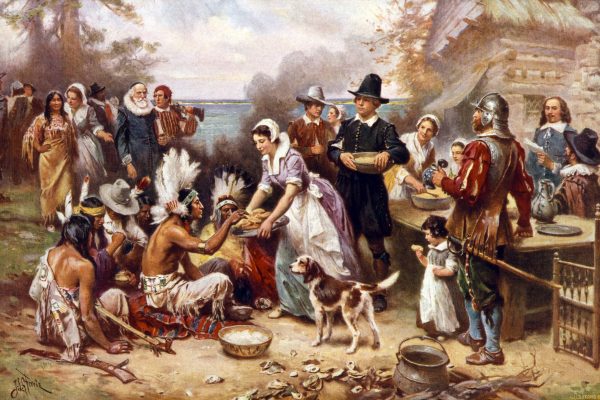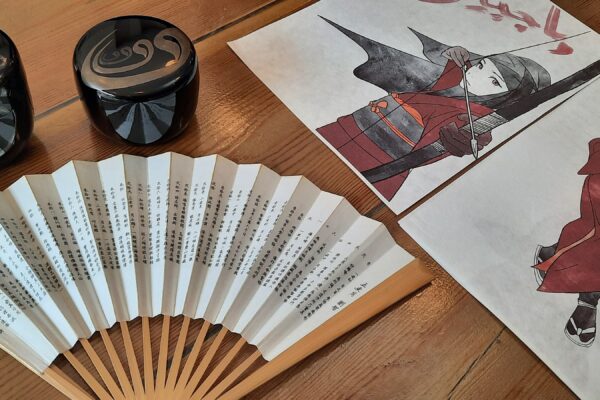“While some admired Japan from a distance, others took the initiative to actually go there.”
“While some admired Japan from a distance, others took the initiative to actually go there.”
Throughout history, Japan has been the distant, mysterious “world’s end” for travellers, mapmakers, traders, and scholars in different parts of the world. For some, this made Japan a place they were keenly interested in learning about and visiting (or, at least in one case, attempting to conquer). For many—including many of the Japanese themselves—Japan’s “splendid isolation” was a reason for the world to instead focus on nations that were easier to reach and more open to engagement.
Muslims were no exception to this. Despite the fact that Islam spread and thrived on the nearby Chinese mainland and in Southeast Asia for centuries, it wasn’t until the late 19th century, that the Muslims and Japanese expressed any real interest in each other. Of course, Muslims had heard of “al-Yāban” (or “Chāpun”), and the islands first appeared on a Muslim-made map in 1430 as part of the work of a Persian scholar, Hāfiz-i Abrū, on the Far East. In the 17th century, an Ottoman historian described the Japanese (or people of “Caponya”) as people who “love to take cold baths and have high morals”. The Japanese probably had similarly basic ideas about Muslims, and they may have briefly encountered Muslim traders or diplomats over the centuries as well. The possibility of individual Muslims settling down in Japan in this period can’t be ruled out either.
However, in the late 19th century, two parallel trends suddenly piqued the interest of the Muslims and Japanese for each other: (1) European imperialism in the Muslim world, and (2) the sudden emergence of Japan as a modern, independent nation that could hold its own against the predatory European powers.
Recognising this, Sultan Abdülhamid II of the Ottoman Empire—the only Muslim state still in control of its foreign affairs—sent the imperial warship Ertugrul to Japan in 1889, loaded with 609 Ottoman sailors and gifts for Emperor Meiji (r. 1867-1912), whose brother had visited Istanbul two years earlier. The Ertugrul made it to Japan, where its crew was welcomed with great hospitality. On the return voyage in 1890, however, the ship was hit by a typhoon in southern Japan and all but 69 of its crew perished. Despite the tragic ending, the goodwill mission established a positive relationship between the Ottoman Empire and “the rising star of the East”.
Two years later, in 1892, Yamada Torajirō arrived in Istanbul. A young and well-educated man, he had organised a fundraising campaign in major cities in Japan to collect money for the families of the Ottoman sailors who had perished. The response was so incredible that the Japanese government asked Yamada to personally take the amount (equivalent to nearly USD $100M today) to Istanbul. Yamada visited Egypt along the way, and after finishing his mission in Istanbul he decided to settle down there for the next 20 years, doing everything he could to foster Japanese-Ottoman political and cultural relations. (Yamada’s story will be explored in more detail in an upcoming article).
Meanwhile, the Muslim world had become fascinated with Yamada’s leader, Emperor Meiji, especially after 1905, when the Japanese humiliatingly defeated the Russians in the Russo-Japanese War. Muslim observers watched in awe as tiny, unheard-of Japan crushed the Russian Empire, which had been harassing Muslims in Central Asia for generations. ‘Abd al-Amīn Sāmī, a court scholar in Bukhara, spread that Meiji (“pādshāh-e Chāpun”) had secretly embraced Islam, that he was a descendant of the Qahtānī Arabs, and that his victory over the Russians meant the Day of Judgement was near. The Ottoman poet Mehmet Akif and historian Abdurreçid Ibrahim expressed their admiration for Japanese achievements; in Iran, Adib Pishāvari wrote an epic poem titled the Mukado-nāmeh in praise of Meiji.
While some admired Japan from a distance, others took the initiative to actually go there. One Egyptian military officer, Ahmad Fadhli, enrolled in a military academy in Tokyo in 1905 and stayed on for several years, during which time he married a Japanese wife. In 1907, an Egyptian Islamic scholar named Ali Jaljawi visited Japan and presumably attended a conference on world religions held at the time in Tokyo. The following year, Maulvi Barkatullah arrived from India, appointed as a teacher in Tokyo’s Foreign Language School, where he taught for five years. In 1909, Abd al-Rashid Ibrahim, a Tatar born in the Russian Empire, fled to Japan seeking refuge from Russian authorities, who were after him because of his struggle for Tatar independence. A pious man, he became the first Muslim preacher in Japan, and many indigenous Japanese embraced Islam through his work.
Meanwhile, the Japanese themselves had been taking some initiatives as well. In 1451, a Japenese envoy to China’s Ming dynasty had met a delegation of Hui (ethnic Chinese) Muslims, who gifted him 20 horses. However, the development of Japanese-Muslim relations was very slow.
In 1715, a Tokugawa scholar named Arai Hakuseki published a book in which he discussed Islam; several other works described the Muslim-majority world in detail. In the late 1870s, a book on the life of Prophet Muhammad (s) was translated into Japanese. And it was only in 1920―after the sudden influx of about 600 Muslim immigrants from Central Asia into Japan during WWI―that the first translation of the Qur’an into Japanese was published by a Buddhist scholar, Sakamoto.
Japan’s first mosque was built in 1905 by Russian prisoners-of-war in Japanese captivity. Another mosque was built in 1914 (and rebuilt in 1935) in Kobe by Indian and Arab businessmen. In 1938, a mosque opened in Tokyo as well, complete with an Islamic school, printing office, and magazine. The grand opening was attended by dignitaries from Egypt, Saudi Arabia and Yemen. Meanwhile, new translations of the Qur’an into Japanese continued to appear in the following decades, and over 100 books and journals were published in Japan between 1935 and 1943.
The Japenese government co-opted Islam during WWII to spread propaganda in Muslim-majority Southeast Asia, which Japan was occupying; in a conference in April 1943, Japan declared itself a true protector of the Islamic faith against the Christian European imperial powers in the region, a claim that was endorsed by the Muslim leaders and scholars who were present. The imam of Tokyo’s mosque, Abdurreshid Ibrahim, claimed in 1942 that “Japan’s cause in the Greater East Asia War is a sacred one and in its austerity, is comparable to the war carried out against the infidels by the Prophet Muhammad in the past.”
The Muslim community in Japan continued to spread after the war, and interest in Islam was refreshed by two events in particular: the 1973 oil crisis, which caused the Japanese to pay attention to oil-producing Muslim states, and the 1979 Iranian Revolution. The advent of television had also given the Japanese a glimpse into Muslim culture. Egypt’s al-Azhar University provided those who were interested in Islam scholarships so that they could live and study Islam in Cairo. And Muslim organisations, such as the Tablighi Jama’at in India/Pakistan, began to pour into Japan to spread the message of Islam among the indigenous Japenese.
Today, the Muslim minority in Japan faces many challenges. However, this is to be expected―Islam arrived at “world’s end” relatively late, but the community is active, growing, and increasingly in touch with Muslims around the globe. For many parts of the world, the arrival of Islam is distant history; for the Japanese, it is history in the making.
Sources:
[1] Anis, Bushra. “The emergence of Islam and the status of the Muslim minority in Japan.” Journal of Muslim Minority Affairs 18, no. 2 (1998): 329-345
[2] Saitoh, Abdul Karim. “The historical journey of Islam eastward and the Muslim community in Japan today.” Journal of Muslim Minority Affairs 1, no. 1 (1979): 117-126
[3] Adhami, Siamak. “The Conversion of the Japanese Emperor to Islam: A Study of Central Asian Eschatology.” Central Asiatic Journal 43, no. 1 (1999): 1-9
[4] Esenbel, Selçuk. “A ‘fin de siècle’ Japanese Romantic in Istanbul: The Life of Yamada Torajiro and His ‘Toruko gakan’.” Bulletin of the School of Oriental and African Studies 59, no. 2 (1996): 237-252
[6] David Motadel, Islam and Nazi Germany’s War (Cambridge, MA: The Belknap Press, 2014), p. 5-6





